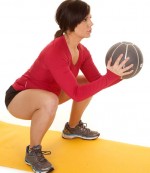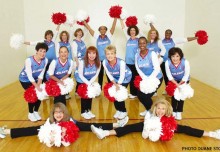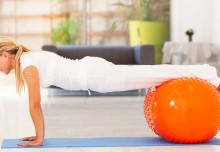
In real life, you use muscles groups, not one muscle at a time. Discover the importance of functional fitness so your body gets both strong and functional.
Have you heard of Functional Fitness? It’s the latest trend in gyms across America. Functional Fitness isn’t new, it is a time-tested technique used for decades by occupational and physical therapists to help their patients achieve functional strength for real-life situations. Functional fitness incorporates exercises that use your body’s own biomechanics. That includes multiple muscle groups at once so your muscles learn to work together and support each other. And that gives your body overall strength, balance, agility, coordination and endurance you can apply to the physical challenges you face in the real world, not just the artificial environment of the gym.
Functional fitness incorporates exercises that use your body’s own biomechanics
The main difference between functional fitness exercises and working out on the machines at the gym is that the machines isolate an individual muscle group, forcing it to work alone and not in tandem with other necessary supporting muscle groups. That’s why a seemingly really fit person with a beach-ready body who seems really strong and fit may get back pain and fatigue when they go to lift their child out of the car seat and turn to set them down, or load up their arms with bags of groceries. That is because those machines do not mimic real-life movement, they are artificial and simulated and only concentrate on one muscle group at a time.
Functional exercises help you to work your entire body, and train your muscle groups to work together and support each other. When muscles all over are integrated and supporting one another, every daily task from bending over to turning or reaching and even lifting heavy items is easier and can be done without strain or injury. Unlike working on the machine, a functional exercise like a triceps extension is done standing, supporting your own weight, and uses free weights that force multiple muscles to engage in every extension and contraction. This prevents some muscles from growing weak while others become too strong. It’s these imbalances between muscle groups that causes most lifting and straining injuries.
Functional Fitness Exercise Example:
 Stand with your feet wide, and hold a light medicine ball in front of you in both hands. While keeping your knees over your ankles, squat down, so your rear moves back and, and lower the medicine ball to the floor. During this time keep your head up and back straight (don’t hunch). Return to a start position and lift the medicine ball over your head. Repeat three sets of 10 repetitions squatting and lowering the ball to the ground. As you get stronger, increase the weight of the ball.
Stand with your feet wide, and hold a light medicine ball in front of you in both hands. While keeping your knees over your ankles, squat down, so your rear moves back and, and lower the medicine ball to the floor. During this time keep your head up and back straight (don’t hunch). Return to a start position and lift the medicine ball over your head. Repeat three sets of 10 repetitions squatting and lowering the ball to the ground. As you get stronger, increase the weight of the ball.
__________________________________
Founder of Functional Fitness on PBS, Suzanne Andrews is the producer of Fitness DVDs for your specific health needs. Free preview at www.healthwiseexercise.com





